Introduction:

Marketing is how businesses tell people about their products and services. Over time, the way we do marketing has changed. We used to rely mostly on print ads, TV, and billboards. But now, the internet has changed everything. Businesses use websites, emails, and social media to connect with people. These two main styles of marketing are known as traditional marketing and digital marketing. This article will explain both, compare them, and help you understand which one might be best for your needs
What is Traditional Marketing and Digital Marketing
Traditional marketing: refers to the original and long-standing methods businesses have used to promote their products and services—before the internet and digital tools became common. It relies on physical and offline channels to reach customers, and it’s been used successfully for decades.
This type of marketing is all around us in daily life: on billboards we see while driving, in newspapers we read at breakfast, and in the TV or radio ads we hear during our favorite shows. Even though digital marketing is very popular now, traditional marketing is still widely used, especially by local businesses and big brands that want to reach a broad audience.

Digital marketing: is the practice of promoting products, services, or brands using digital technologies and platforms, primarily through the internet but also on mobile phones, digital displays, and other digital media.
It combines creativity, technology, data analysis, and strategic thinking to reach, engage, and convert customers in a targeted and measurable way.

Types of Traditional Marketing
1. Print Marketing: This includes ads in:

- Newspapers and magazines
- Brochures
- Flyers
- Posters
2. Broadcast Marketing: Uses TV and radio to reach large audiences.
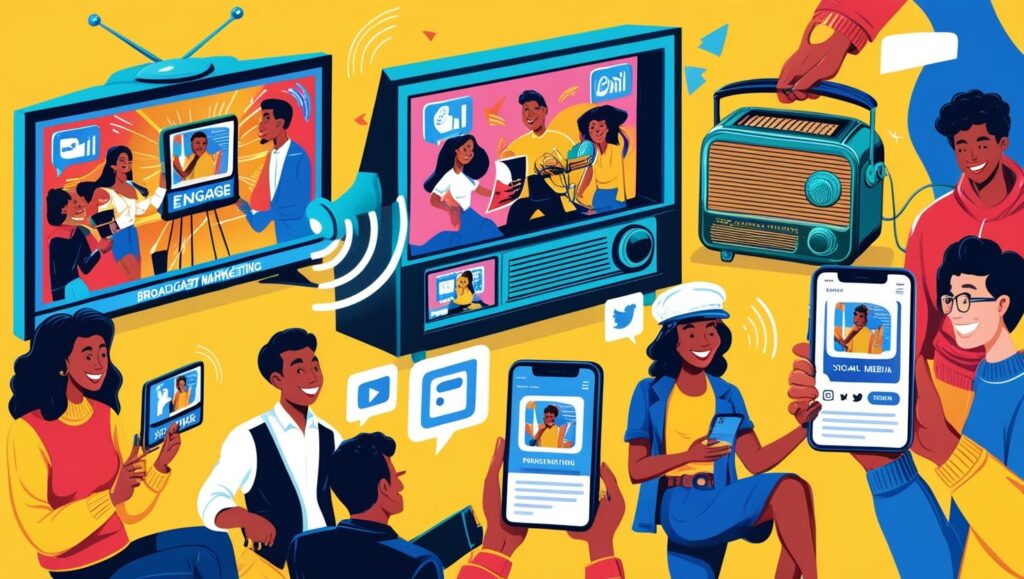
- TV Ads: Shown during shows or sports events
- Radio Ads: Heard while driving or listening to local stations.
3. Outdoor Marketing: Ads placed in public areas:

- Billboards
- Bus shelters
- Transit ads (buses, trains, taxis)
- Street banners
4. Direct Mail Marketing: Sending promotional materials directly to people’s homes:
- Postcards
- Catalogs
- Letters
5. Telemarketing: Calling people to sell products or gather information.
6. Event Marketing: Promoting products through fairs, exhibitions, trade shows, and sponsored events.
7. Referral Marketing (Word of Mouth): Encouraging happy customers to talk about your business to others.
Types of Digital Marketing
1. Search Engine Optimization (SEO): SEO is the process of optimizing your website and content to rank higher in search engine results pages (SERPs) for specific keywords.
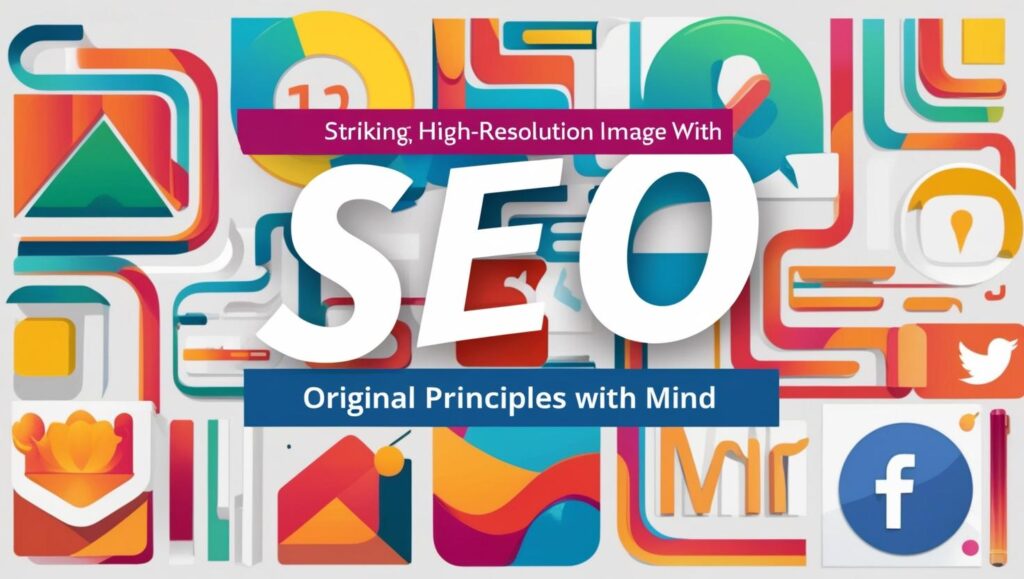
Key Aspects:
- On-Page SEO: Optimizing title tags, meta descriptions, headings, and content structure.
- Off-Page SEO: Building backlinks from other reputable websites.
- Technical SEO: Improving site speed, mobile-friendliness, indexing, and crawlability.
2. Content Marketing: Content marketing focuses on creating and distributing valuable, relevant content to attract and engage a specific audience.
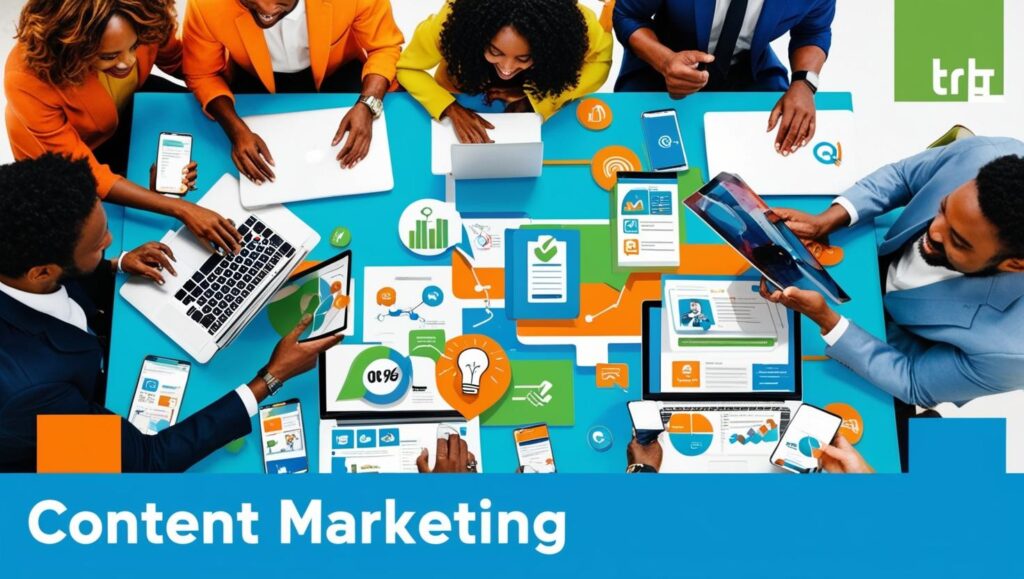
Common Formats:
- Blog posts and articles
- Videos and webinars
- Infographics
- Podcasts
- eBooks and whitepapers
3. Social Media Marketing (SMM): Social media marketing involves using platforms like Facebook, Instagram, LinkedIn, Twitter, TikTok, and Pinterest to promote products, engage audiences, and build brand loyalty.
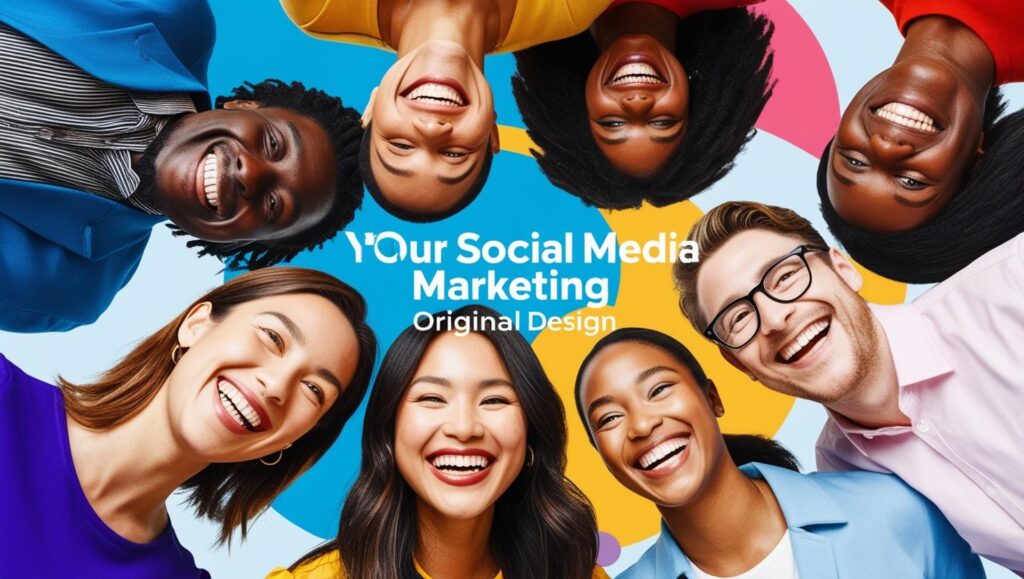
Approaches:
- Organic Social: Regular posting, engaging with followers, building a community.
- Paid Social: Running targeted ad campaigns based on user interests, demographics, and behavior.
4. Pay-Per-Click Advertising (PPC): PPC is a digital advertising model where advertisers pay a fee each time their ad is clicked. It provides instant visibility on search engines and social platforms.
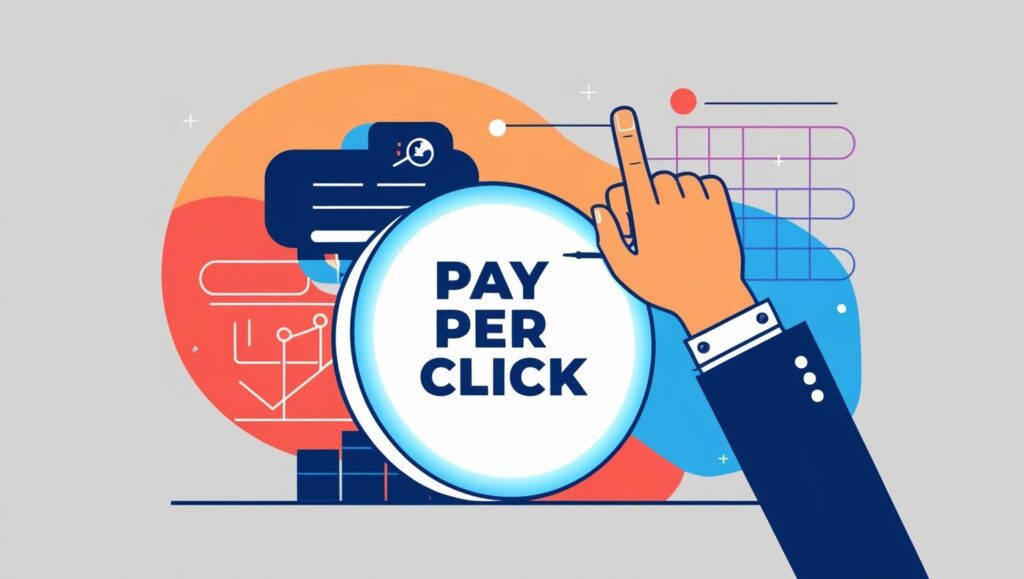
Popular Platforms:
- Google Ads (Search, Display, Shopping)
- Facebook/Instagram Ads
- YouTube Ads
- LinkedIn Ads
- Microsoft/Bing Ads
5. Email Marketing: Email marketing involves sending emails to a list of subscribers or customers to promote products, share content, or build relationships.
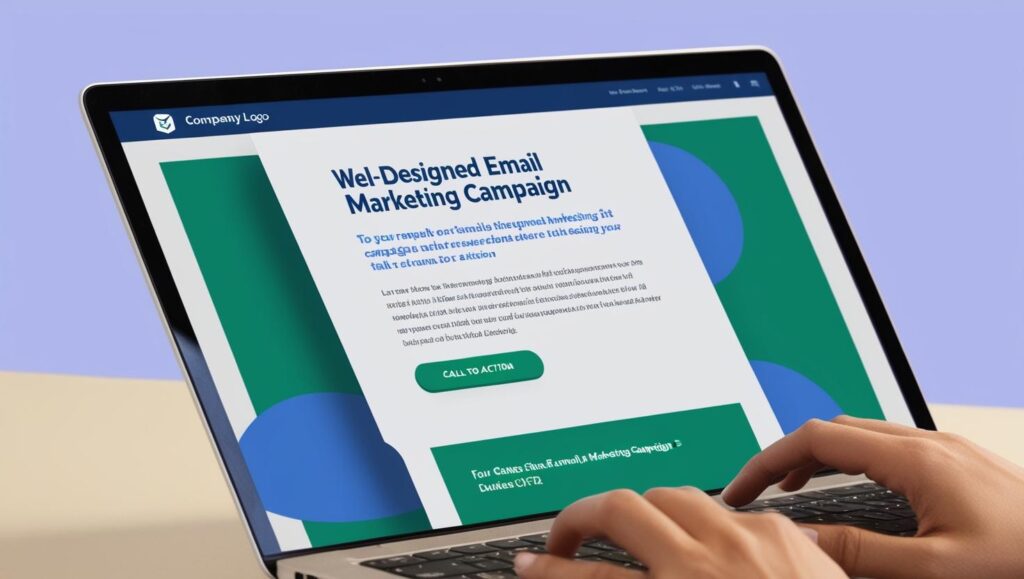
Types of Email Campaigns:
- Welcome emails
- Newsletters
- Promotional campaigns
- Abandoned cart reminders
- Customer surveys
6. Affiliate Marketing: Affiliate marketing is a performance-based strategy where businesses reward affiliates (partners or influencers) for bringing in traffic or sales.

How It Works:
- Affiliates promote your products/services via their channels.
- They earn a commission for every sale or lead generated through their referral links.
7. Influencer Marketing: Influencer marketing involves collaborating with individuals who have a large or niche following on social media or blogs to promote your brand.

Types of Influencers:
- Mega Influencers: Celebrities with millions of followers.
- Macro Influencers: Large-scale influencers with 100K+ followers.
- Micro Influencers: Smaller, highly engaged audiences (1K–100K followers).
- Nano Influencers: Very small but loyal followings, often highly trusted.
8. Mobile Marketing: Mobile marketing targets users on their smartphones or tablets through mobile apps, SMS, mobile search ads, or location-based services.
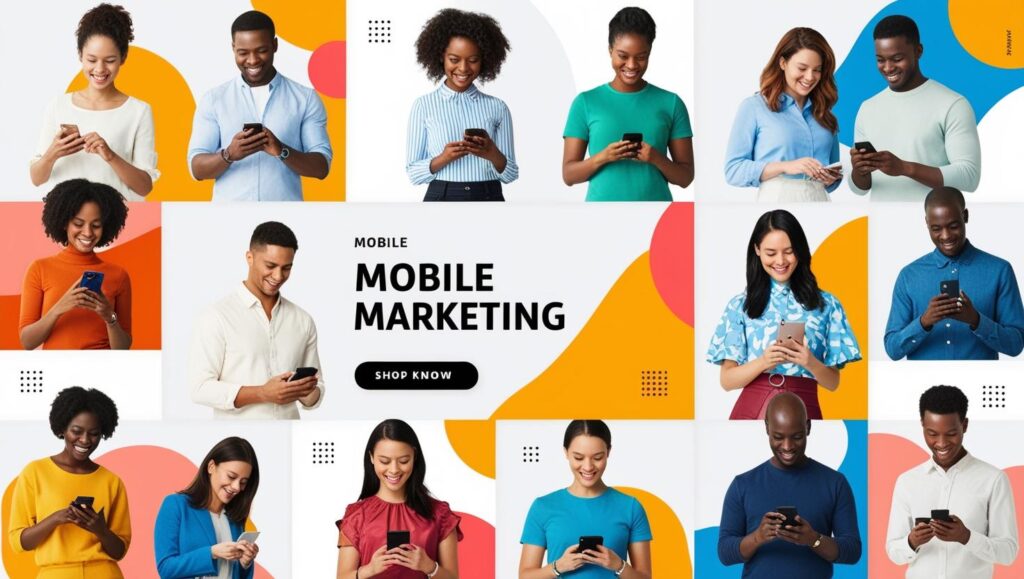
Tactics Include:
- SMS/MMS campaigns
- Push notifications
- In-app advertising
- QR codes
- Mobile-optimized websites
9. Video Marketing: Video marketing uses video content to promote, educate, or entertain audiences.

Platforms:
- YouTube
- Facebook and Instagram
- TikTok
- LinkedIn
- Website landing pages
10. Display Advertising: Display advertising involves placing banner ads, images, or video ads on websites, apps, or social media to drive traffic or brand awareness.
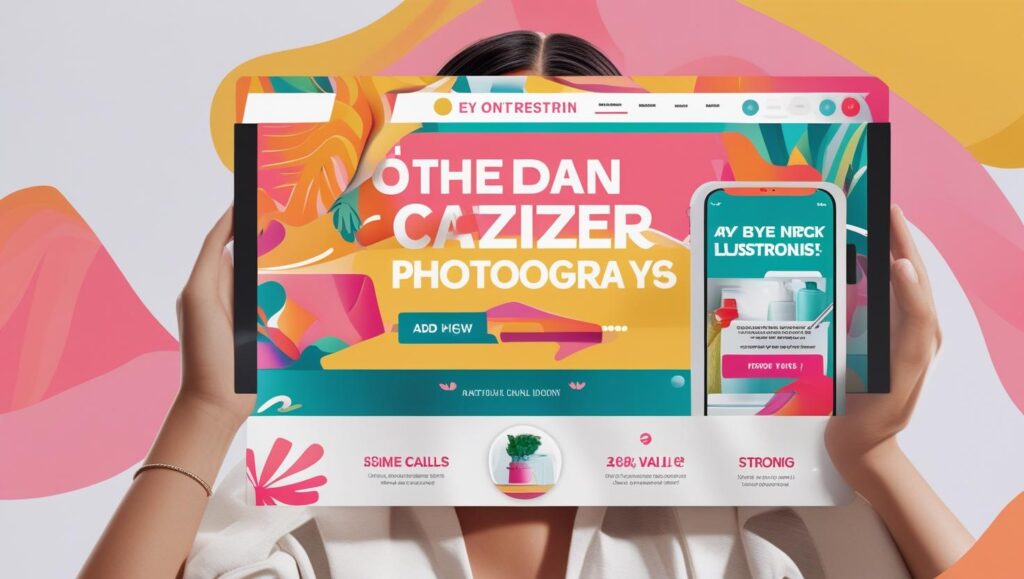
Types of Ads:
- Static image ads
- Animated/GIF ads
- Interactive ads
- Retargeting ads
Platforms:
- Google Display Network (GDN)
- Programmatic ad platforms
11. Web Analytics and Conversion Rate Optimization (CRO):
While not a direct form of promotion, analytics and CRO are essential for monitoring digital marketing efforts and improving performance.

Key Tools:
- Google Analytics
- Hotjar
- Crazy Egg
- A/B Testing Tools
13. E-commerce Marketing: E-commerce marketing focuses on using digital tactics to drive traffic to online stores and convert that traffic into paying customers.
Channels Used:
- SEO and PPC
- Email campaigns
- Product reviews and user-generated content
- Shopping ads (Google, Instagram, Facebook)
14. Voice Search Optimization: Voice search optimization involves tailoring content so it can be discovered via voice assistants like Siri, Alexa, or Google Assistant.
Focus Areas:
- Using natural language and conversational keywords
- Optimizing for featured snippets
- Enhancing mobile usability
Advantages of Traditional Marketing:

Even though digital marketing is growing fast, traditional marketing still has many benefits, especially in certain situations. Here are the main advantages, explained in simple language:
1. Easier to Understand
- Ads in newspapers, TV, or billboards are straightforward and familiar.
- No need for internet or tech skills to see or understand them.
2. Feels More Real
- People can touch a flyer, hold a brochure, or see a billboard in real life.
- This physical presence makes the message feel more real and lasting.
3. Builds Trust and Brand Image
- Many people trust ads they see in the newspaper or on TV more than online pop-ups.
- Being on TV or in print also gives the brand a professional and serious image.
4. Great for Local Targeting
- Perfect for businesses that want to reach people in their town or neighborhood.
- Flyers, local newspapers, and radio work well for local promotions.
5. Long-Lasting Impact
- A TV commercial or billboard may stick in someone’s mind longer than a quick online ad.
- Printed materials like magazine ads or flyers can be kept and viewed multiple times.
- Many older people are more comfortable with traditional media than websites or apps.
- TV, radio, and newspapers are often their main sources of information.
7. Works Well in Public Spaces
- Outdoor ads like banners, posters, and billboards are great for places with lots of people.
- These ads catch attention while people are commuting, shopping, or walking.
.
Advantages of Digital Marketing
1. Global Reach
Digital marketing allows businesses to reach a worldwide audience.
With traditional marketing, reach is limited by geography and cost. Digital platforms remove those boundaries, enabling businesses—small or large—to reach customers across countries and continents.
2. Cost-Effective
It is generally much cheaper than traditional marketing.
Running a Facebook or Google ad campaign is more affordable than printing thousands of brochures or paying for TV ads. Even small businesses can compete with large brands on digital platforms.
3. Measurable Results
You can track and measure every aspect of your campaign in real-time.
Analytics tools allow you to see impressions, clicks, conversions, engagement, and ROI.
4. Highly Targeted:
You can target specific demographics, interests, behaviors, and even individual users.
Digital marketing platforms provide detailed targeting options that help deliver the right message to the right audience.
5. Improved Conversion Rates
With the ability to target, personalize, and automate, conversion rates tend to be higher.
A well-optimized website or landing page, combined with effective follow-up emails or retargeting ads, increases the chances of turning visitors into customers.
6. Real-Time Engagement
You can communicate with customers instantly.
Whether through social media comments, live chat, or emails, digital platforms allow real-time feedback and engagement.
7. Personalization
Messages can be customized based on a user’s behavior, location, and interests.
Personalized marketing creates stronger connections with customers and leads to better engagement.
8. Flexibility and Adaptability
Campaigns can be launched quickly and modified at any time.
If something isn’t working, digital marketing allows you to pause, adjust, or redirect campaigns instantly.
9. Better Customer Insights
You gain detailed insights into customer behavior and preferences.
Analytics provide data on what users like, how long they stay on a page, and what actions they take, which can guide future strategies.
10. Increased Engagement
Digital content like videos, quizzes, polls, and interactive infographics create deeper engagement.
Engaged users are more likely to become loyal customers and brand advocates.
11. Scalability
Digital marketing strategies can scale with your business.
Whether you’re reaching 100 or 1 million users, your digital infrastructure can grow with you without massive cost increases.
Disadvantages of Traditional Marketing:
1. Expensive
Traditional marketing methods like TV ads, newspaper ads, radio, and billboards usually cost a lot of money. For example, making and showing a commercial on TV can be very pricey, especially if it’s shown during popular shows. Small businesses often can’t afford these costs.
2. Hard to Measure Results
With traditional marketing, it’s tough to know exactly how many people saw your ad or how many of them bought your product because of it. Unlike online ads, which give you data and numbers, traditional ads don’t show clear results. This makes it hard to tell if your money was well spent.
3. Limited Audience Reach
Traditional marketing often only reaches people in a certain area. For example, a local newspaper ad only reaches people who read that paper. If your goal is to reach people in other cities or countries, this kind of marketing may not be very effective.
4. One-Way Communication
Traditional marketing is like talking at your customers, not with them. You show them an ad, but they can’t easily reply or give feedback. In contrast, online marketing allows customers to comment, ask questions, and interact with the brand right away.
5. Less Targeted
Traditional ads are usually shown to everyone, whether they’re interested or not. For example, a shampoo ad on TV goes to all viewers, even those who just bought shampoo or don’t need it. Online ads can be more specific, showing only to people who are likely to be interested.
Disadvantages of Digital Marketing
1. High Competition
The digital space is crowded. Thousands of businesses are competing for the same audience, especially on popular platforms like Google, Facebook, and Instagram.
Impact: It can be difficult to stand out, especially for small businesses with limited budgets.
2. Requires Technical Skills
To run successful campaigns, marketers need knowledge of SEO, PPC, analytics, automation tools, web design, and content creation.
Impact: Small businesses may struggle if they don’t have access to skilled professionals or can’t afford training.
3. Security and Privacy Issues
Handling user data brings responsibilities. A breach or misuse of customer data can damage reputation and lead to legal issues.
Impact: Businesses must comply with laws like GDPR (Europe) or CCPA (California), which can be complex and costly to manage.
4. Ad Fatigue and Banner Blindness
Users are exposed to hundreds of ads daily. Over time, they may ignore ads or become annoyed by constant promotions.
Impact: Ad effectiveness can drop, leading to lower engagement and higher costs for conversions.
5. Dependence on Technology
Digital marketing depends heavily on internet access, software tools, and platforms like Google and Facebook.
Impact: Any tech failure, platform change, or internet outage can disrupt operations or campaign performance.
6. Changing Algorithms and Platform Rules
Platforms like Google, Facebook, and Instagram constantly update their algorithms. These changes can affect visibility, ranking, and performance.
Impact: Businesses must stay up to date and often adjust strategies, which requires time and expertise.
7. Negative Feedback and Public Scrutiny
Social media and online reviews are double-edged swords. While they can build trust, they also allow for public complaints and negative reviews.
Impact: Bad experiences can quickly go viral and harm a brand’s reputation.
8. Difficult to Measure ROI Accurately (at Times)
While many digital tools provide metrics, it’s sometimes hard to track how a digital campaign translates into actual revenue, especially in multi-touch customer journeys.
Impact: Businesses may struggle to attribute success to specific campaigns or channels.
9. Time-Consuming
Digital marketing requires consistent effort in creating content, monitoring analytics, updating campaigns, and engaging with users.
Impact: It can be overwhelming, especially for small businesses with limited staff.
10. Click Fraud in Paid Advertising
Click fraud occurs when bots or competitors repeatedly click on paid ads to deplete your advertising budget.
Impact: It leads to wasted ad spend and lower ROI.
11. Short Attention Span of Users
Digital users scroll quickly and have low tolerance for slow websites or boring content.
Impact: Brands have only a few seconds to capture attention and must constantly optimize their messaging and design.
12. Requires Continuous Learning and Updating
Digital trends and tools evolve rapidly. What works today might not work tomorrow.
Impact: Marketers must continually learn and adapt, which takes time and resources.
Who Should Use Traditional Marketing?
1. Local Businesses
Small shops, restaurants, or service providers (like plumbers or salons) that only serve a local area can benefit from traditional marketing. Ads in local newspapers, flyers, radio, or billboards help them reach nearby customers who are more likely to visit.
Example: A pizza shop advertising in the local newspaper or mailing coupons to neighborhood homes.
2. Older Audiences
If a business wants to reach older people who may not use the internet or social media much, traditional marketing works well. Older generations are more likely to read newspapers, watch TV, or listen to the radio.
Example: A health clinic placing ads in a print magazine read mostly by seniors.
3. Established Brands
Big brands that want to stay in people’s minds often use traditional ads to remind customers they’re still around. These brands already have wide recognition and use traditional media to reinforce their image.
Example: Coca-Cola running a commercial during the Super Bowl.
4. Events and Announcements
When a business is having a grand opening, sale, or community event, traditional marketing like posters, signs, and local radio ads can quickly spread the word to people nearby.
Example: A new bookstore putting up banners and handing out flyers before its launch.
5. Areas with Low Internet Access
In places where many people don’t have regular access to the internet, traditional methods are still the best way to reach them.
Example: A local school in a rural area using posters and radio ads to promote enrollment.
6. Mass Market Products
If a product is for everyone (like toothpaste or cereal), a company might want to reach a broad audience, not just online users. TV or billboard ads can get seen by a lot of people at once.
Example: A laundry detergent commercial that airs during a popular TV show.
Who Should Use Digital Marketing?
Digital marketing is not just for tech companies or large corporations—any individual, business, or organization looking to grow their visibility, reach a wider audience, or boost sales can benefit from it. Below is a detailed look at who should use digital marketing and why.
1. Small and Medium-Sized Businesses (SMBs)
Why:
- Limited budgets make cost-effective digital channels ideal.
- Can compete with larger businesses by targeting specific niches.
- Easy to scale and adapt strategies based on performance.
Example:
A local bakery using Instagram and Google My Business to attract nearby customers and promote daily specials.
2. Startups
Why:
- Need fast brand awareness and lead generation.
- Digital channels allow for rapid testing and validation of ideas.
- Attract early adopters through SEO, content, and social media.
Example:
A tech startup launching a new app using influencer marketing, blog content, and email campaigns to build a user base.
3. Large Enterprises and Corporations

Why:
- Have the resources to run integrated, multi-channel campaigns.
- Need data-driven insights for global marketing strategies.
- Require tools to personalize content at scale.
Example:
Nike uses SEO, social media, video content, and e-commerce ads to maintain brand dominance and global sales.
4. E-commerce Businesses
Why:
- Entirely dependent on digital channels to attract and convert customers.
- Use retargeting, SEO, email, and mobile marketing for sales and retention.
- Able to optimize conversion rates through analytics and testing.
Example:
An online clothing store running Facebook ads, Google Shopping campaigns, and cart abandonment emails.
5. Freelancers and Consultants
Why:
- Need personal branding and online visibility to attract clients.
- Can showcase expertise through blogs, LinkedIn, and email newsletters.
- Build authority with case studies, testimonials, and content.
Example:
A freelance designer building a portfolio website and attracting leads via LinkedIn and SEO.
6. Educational Institutions
Why:
- Use digital marketing to attract local and international students.
- Offer webinars, email nurturing, and virtual tours online.
- Build awareness through search ads, YouTube, and content marketing.
Example:
A university promoting online degree programs through Google Ads, SEO, and social media outreach.
7. Healthcare Providers
Why:
- Patients search online for services, reviews, and health information.
- Digital marketing helps build trust and visibility.
- SEO and local search are key for private clinics and hospitals.
Example:
A dental clinic using local SEO, Google Ads, and Facebook to attract new patients and promote special offers.
8. Non-Profit Organizations
Why:
- Reach donors, volunteers, and supporters globally.
- Raise awareness and collect donations online.
- Use storytelling and social campaigns to drive engagement.
Example:
An NGO using video content, social media, and email newsletters to fundraise and promote causes.
9. Retail Stores and Local Businesses
Why:
- Attract local customers through Google Maps and local SEO.
- Promote offers via SMS, social media, and email.
- Online reviews and digital ads influence buying decisions.
Example:
A local restaurant using Google Reviews, Instagram Reels, and delivery apps for customer engagement.
10. Real Estate Agents and Agencies
Why:
- Potential buyers and renters search for homes online.
- Visual content (photos, video tours) is powerful in real estate.
- Use email, SEO, and social media for lead generation.
Example:
A realtor sharing listings on Facebook Marketplace and running targeted ads to attract buyers in a specific city.
11. B2B (Business-to-Business) Companies
Why:
- Use LinkedIn, whitepapers, and webinars to reach decision-makers.
- Lead generation via SEO, PPC, and email automation.
- Content marketing builds authority and trust.
Example:
A software company offering CRM solutions using case studies, demos, and email campaigns to attract corporate clients.
12. Professionals and Personal Brands
Why:
- Build reputation and expand influence online.
- Leverage platforms like LinkedIn, Medium, YouTube, and Twitter.
- Monetize through online courses, consulting, or speaking gigs.
Example:
A fitness coach offering virtual training and selling plans via Instagram and YouTube.
Final Thoughts:
Marketing has changed a lot over the years, but the goal remains the same: connecting with people and sparking interest in your product or service. Traditional marketing has a strong foundation and works well in many situations. Digital marketing brings innovation and powerful tools to reach modern audiences.
You don’t need to choose one or the other. Often, the best strategy is a smart blend of both. This way, you can reach different types of customers and meet them where they are.
The most successful businesses today are the ones that understand their audience, use the right tools, and stay updated with marketing trends. Whether you’re handing out flyers in your neighborhood or launching a campaign on Instagram, what matters most is delivering the right message to the right people at the right time.
Keep learning, stay creative, and always listen to your customers. With the right mix of traditional and digital marketing, your business can grow and thrive in today’s ever-changing world.